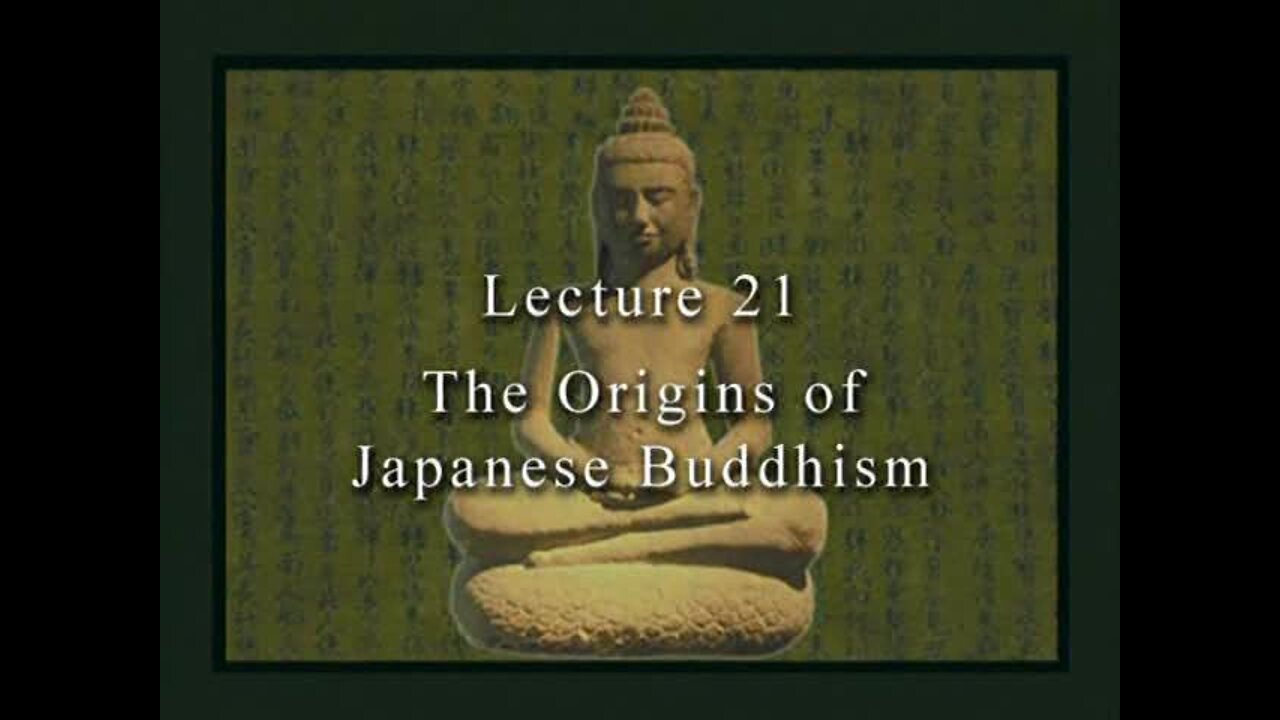Premium Only Content

David Eckel: 21 The Origins of Japanese Buddhism
Buddhism entered Japan in the sixth century of the common era. In the early years, during the reign of Prince Shotoku (574–622) and during the Nara Period (710–784), Buddhism was invoked to promote the welfare of the nation.
The indigenous Japanese tradition known as Shinto, or “the Way of the Gods,” was codified to respond to Buddhism, or “the Way of the Buddha.” When the imperial capital was moved to Kyoto in the ninth century, two new Buddhist schools emerged that changed the face of Japanese Buddhism.
The Shingon School, founded by Kukai (774–835), brought the colorful symbols and rituals of Tantra to Japan.
The Tendai School, founded by Saicho (767–822), introduced the synthesis of the T’ien-t’ai School and served as the spawning ground for several important movements that shaped later Japanese history.
[This upload is for informational purposes only, and is not monetized. If anyone claims copyright and wants the video removed, please write to dharmadocus@gmail.com and the video will be removed immediately.]
-
 DVR
DVR
Space Ice
7 hours agoSpace Ice & Redeye Try To Figure Out Seagal's Most Incoherent Movie
10K -
 1:00:36
1:00:36
PMG
21 hours ago $3.01 earned"Santa Trump is Giving Us Hope - But Will Johnson Stand Strong?"
30.2K6 -
 54:30
54:30
LFA TV
1 day agoThe German Strongman’s Arrival Is Imminent | Trumpet Daily 12.18.24 7PM EST
29.6K2 -
 2:04:11
2:04:11
Melonie Mac
5 hours agoGo Boom Live Ep 32! Soul Reaver Remastered!
25.4K6 -
 39:11
39:11
Sarah Westall
3 hours agoDigital Slavery and Playing with Fire: Money, Banking, and the Federal Reserve w/ Tom DiLorenzo
36.8K1 -
 1:38:38
1:38:38
2 MIKES LIVE
7 hours ago2 MIKES LIVE #157 ILLEGALS, PROTESTORS AND DRONES!
24K1 -
 1:01:03
1:01:03
LFA TV
1 day agoTHE LATEST SPENDING BILL IS AN ABOMINATION! | UNGOVERNED 12.18.24 5pm EST
28.7K33 -
 1:43:34
1:43:34
Redacted News
7 hours agoBREAKING! WARMONGERS PUSHING TRUMP TO LAUNCH PRE-EMPTIVE WAR WITH IRAN | Redacted News
134K234 -
 1:00:26
1:00:26
Candace Show Podcast
6 hours agoPiers Morgan x Candace Owens | Candace Ep 123
77.9K205 -
 2:06:51
2:06:51
Darkhorse Podcast
9 hours agoThe 256th Evolutionary Lens with Bret Weinstein and Heather Heying
59.3K26